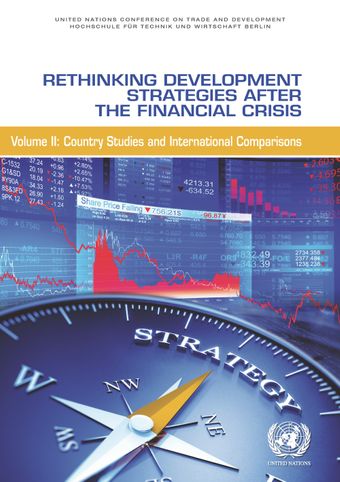Is Chile a role model for development?

- Author: Ricardo Ffrench-Davis
- Main Title: Rethinking Development Strategies after the Financial Crisis , pp 81-93
- Publication Date: March 2016
- DOI: https://doi.org/10.18356/fd11329b-en
- Language: English
- Previous Chapter
- Table of Contents
- Next Chapter
The Chilean economy is usually highly praised as having been successful since the imposition of neo-liberal reforms under the dictatorship of general Pinochet in 1973. However, the four decades that have elapsed include sub-periods with quite different policy approaches and notably diverse outcomes; thus, there is neither one unique model nor only one outcome. The four decades’ growth is moderate, averaging 4.2 per cent per year: it averaged 2.9 per cent (meagre) during the 16 years of dictatorship and a good performance of 5.1 per cent during a quarter-century of democracy, albeit with a vigorous 7.1 per cent in the initial years (1990–1998) and a modest 3.9 per cent in the last 15 years. Hence, sometimes, Chile has performed closer to becoming a “model” for development, and at other times the opposite or something in between. Focusing on three episodes (1973–1981, 1990–1995 and 2008–2013), we explore the underlying explanatory variables and some lessons for building “a model for development”.
© United Nations
ISBN (PDF):
9789210575577
Book DOI:
https://doi.org/10.18356/daa61e24-en
Related Subject(s):
Economic and Social Development
Sustainable Development Goals:
Countries:
Chile
-
From This Site
/content/books/9789210575577c011dcterms_title,dcterms_subject,pub_keyword-contentType:Journal -contentType:Contributor -contentType:Concept -contentType:Institution105
/content/books/9789210575577c011
dcterms_title,dcterms_subject,pub_keyword
-contentType:Journal -contentType:Contributor -contentType:Concept -contentType:Institution
10
5

